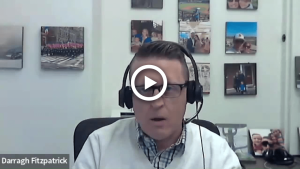Keeping You Safe While Driving Through Severe Weather Conditions

Today’s forecast consists of heavy rain and snow. In an effort to help prepare and keep you safe for the commute home, allow us to share some helpful reminders and additional information about driving in severe weather conditions from Travelers Insurance.
Driving for Winter Conditions
Before you leave the driveway or parking lot, take time to clear snow and ice off your car, including your windows, mirrors, lights, reflectors, hood, roof and trunk. Drive with your headlights on, and be sure to keep them clean to improve visibility. Use caution when snow banks limit your view of oncoming traffic.
As you get on the road, remember that speed limits are meant for dry roads, not roads covered in snow and ice. You should reduce your speed and increase your following distance as road conditions and visibility worsen. Turn your headlights on to help other vehicles see you. Avoid using cruise control in snowy or icy conditions – you want as much control of your car as possible. Be cautious on bridges and overpasses as they are commonly the first areas to become icy, and avoid passing snow plows and sand trucks. The drivers can have limited visibility, and the road in front of them could be worse than the road behind.
What Is Black Ice?
Black ice is not actually black in color — it’s clear enough that you can see the road beneath it, making it appear “black.” Black ice may also be difficult to distinguish from a wet roadway and may appear wet and shiny. An absence of air bubbles allows it to blend in with any surface, making it difficult to see for pedestrians on sidewalks as well as for drivers on winter roads. Fog, light freezing rain, and melting and refreezing precipitation can all cause black ice to form.
Even if the air temperature is above freezing, cooler surface temperatures may mean black ice could still present a hazard on the roads. Vehicle exhaust moisture can also cause black ice to form on roadways, where drivers may not expect it, such as intersections where stopped vehicles may idle for brief periods of time allowing condensate to form.
We wish you a safe commute home! Please feel free to contact us if you have additional questions or would like us to review your auto policy.









